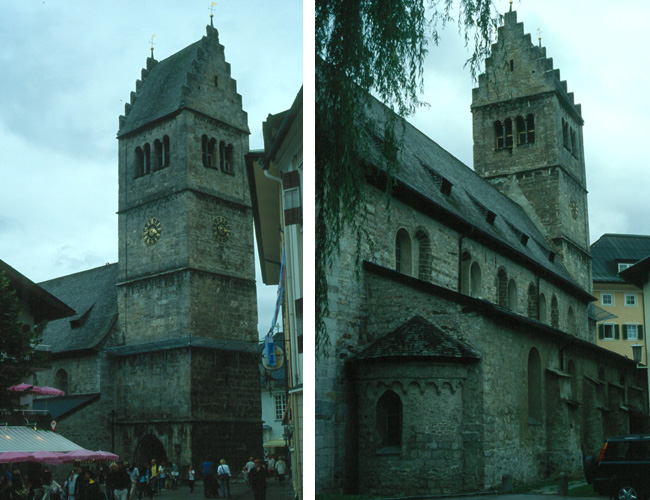
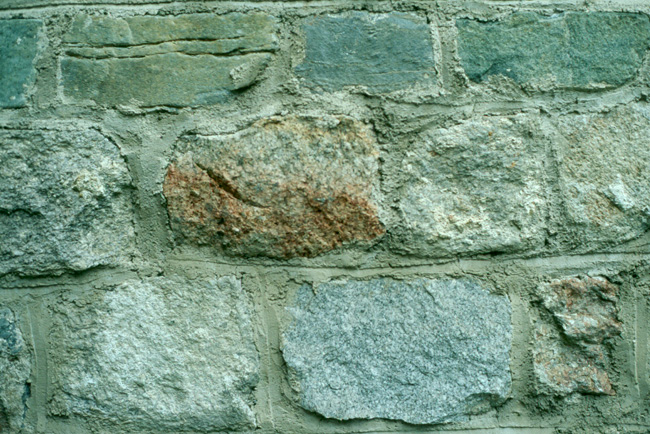
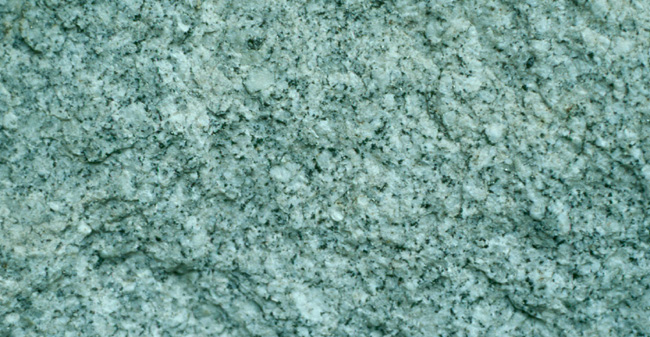
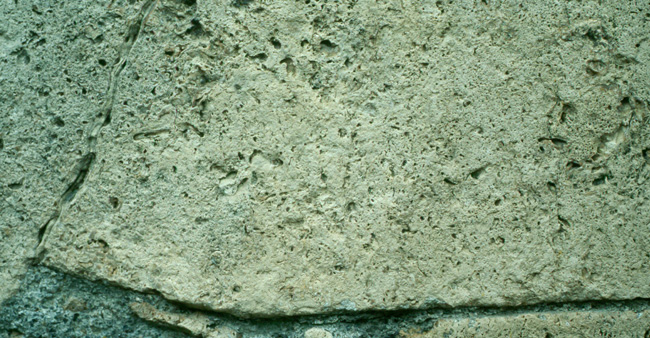
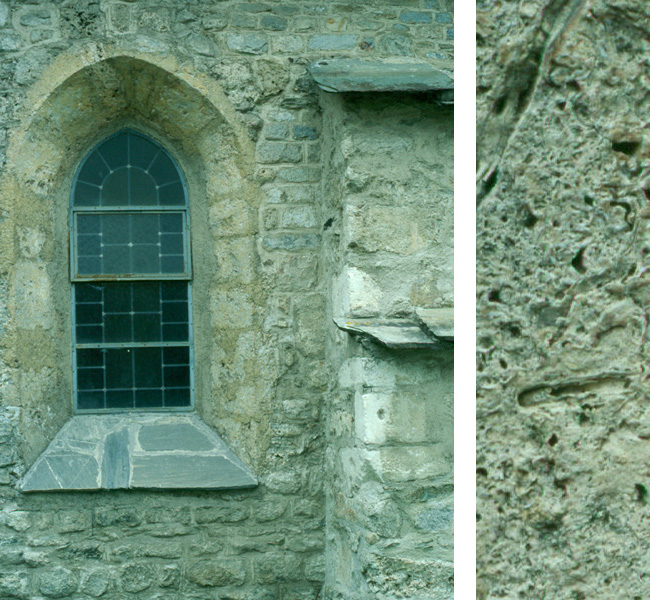

|
| The building above is the Pfarrkirche or parish church of Zell am See, a small town in the Austrian Alps. Zell am See, or "Cell on the Lake", takes its name from a monastery founded in the eighth century and around which the town grew. The church is a medieval Romanesque-Gothic structure built of at least three difference kinds of stone. Those three kinds of stone encompass the spectrum of fundamental kinds of rock: igneous, sedimentary, and metamorphic. |

|
| The main part of the church is built of variety of plutonic igneous rocks, along with some high-grade metamorphic rocks, like those just above. Most striking of these are white granites like the block at lower right above and shown in more detail below. |

|

|
| The tower of the church dates from 1309 and thus is younger than the main part of the church. It is built of limestone (a sedimentary rock) in which fossils are readily evident. A large block is shown above, and part of that block is shown in more detail below at right. |

|
| Finally, slate (a metamorphic rock) was used to make the window ledges and to cap the buttresses, as shown above at left. Slate cleaves to gives flat surfaces, and so it makes flat plates useful for the windowsills here. In fact, some slates cleave so smoothly that they were the standard material for blackboards in days gone by. Because it cleaves to flat thin sheets, slate is also used for roofing, and it was used for the roof of this church. It's visible in the uppermost image on this page. |
Back to the Index for these pages